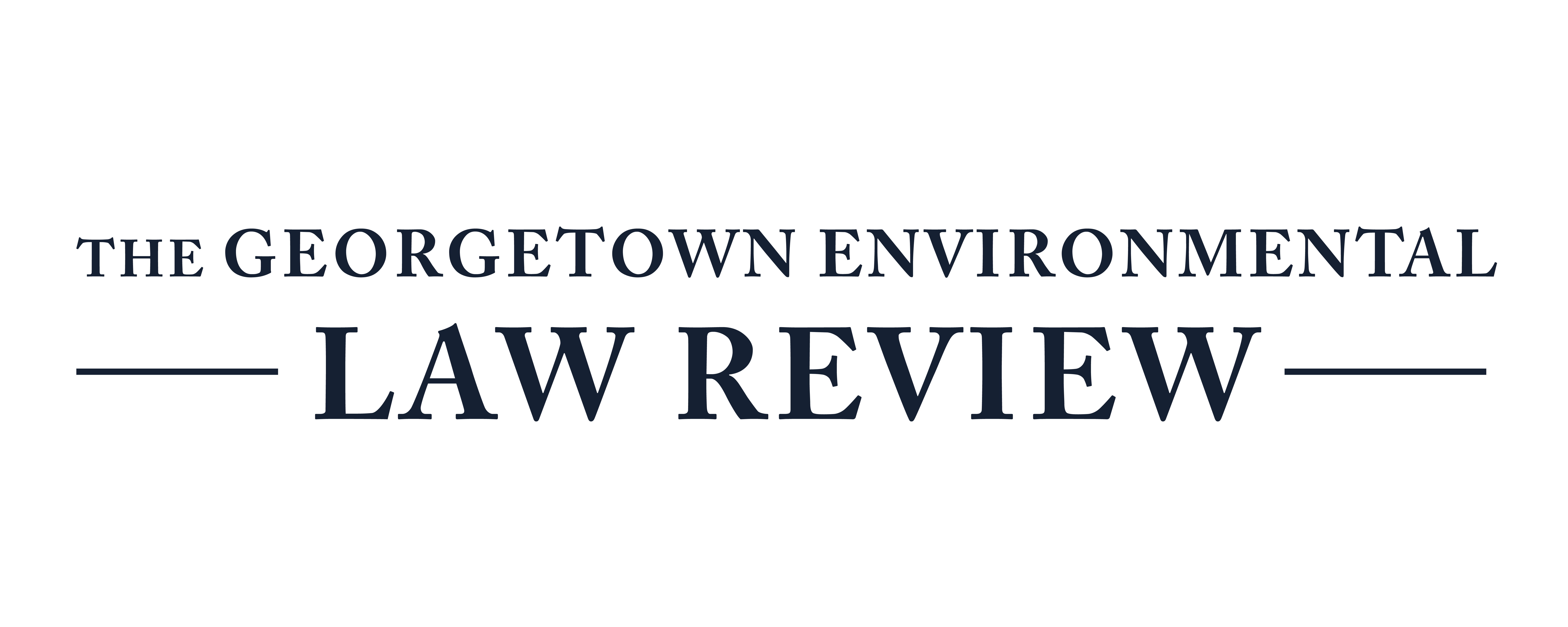Habitat at Risk: The Trump Administration’s Rollback of Wildlife & Habitat Safeguards
October 10, 2025 by Jenny King

Two Florida panther kittens.
The Trump administration has issued numerous rollbacks of legislation critical to wildlife preservation, which will result in loss of biodiversity and ensuing litigation.
Habitat loss is the leading cause of global biodiversity decline,[1] and threatens over 90% of federally protected species.[2] Biodiversity loss not only affects wildlife but also jeopardizes human access to clean air, water, food, and soil fertility.[3] Scientists warn that the world is experiencing a sixth mass extinction, primarily driven by human activities such as land use and climate change.[4]
Yet, the Trump administration has embarked on a large-scale initiative to dismantle decades of environmental progress in the name of “efficiency.”[5] These actions undermine the nation’s core environmental laws by treating habitat destruction as an acceptable cost for economic growth. This article highlights several of the administration’s deregulatory actions and their legal and ecological implications.
Changing the Endangered Species Act’s (ESA) definition of “harm”: In April 2025, the U.S. Fish and Wildlife Service proposed narrowing the definition of “harm” in the ESA.[6] For decades, “harm” under the ESA’s “take” provision included “significant habitat modification or degradation” that injures or kills species by disrupting essential behaviors such as breeding, feeding, or sheltering.[7] Since 1995, courts have upheld this interpretation as a cornerstone of ESA enforcement.[8] The new proposal would narrow this definition to only cover actions that directly kill or injure an animal, meaning that activities like bulldozing wetlands and logging forests, without immediately harming animals, would no longer be illegal.[9]
This shift effectively excludes habitat destruction from ESA protection, threatening vulnerable species and the ecosystems that sustain them.[10] More than 150,000 comments opposing the change have been submitted from scientists, bipartisan officials, and Senators, indicating strong resistance and likely legal challenges if enacted.[11]
The Migratory Bird Treaty Act (MBTA): The MBTA is one of the oldest wildlife protection laws, prohibiting the hunting, capturing, or killing of native migratory birds without a permit.[12] In April 2025, the Interior Solicitor reinstated a controversial 2017 opinion which had previously been vacated by a federal court in 2020 for conflicting with the MBTA’s goal of protecting birds from accidental deaths.[13] The new rule eliminates penalties for “incidental deaths” from industrial activities like oil drilling or wind operations, even when harm is foreseeable and preventable.[14] For decades, courts held companies accountable for negligent practices under the MBTA, as in post-Deepwater Horizon restoration penalties.[15] Removing liability eliminates incentives for simple safeguards, such as covering pits or switching off tower lights, despite evidence that such things kill millions of birds annually.[16]
Emergency Logging and Roadless Rule Repeal: In April 2025, the Secretary of Agriculture declared 113 million acres, or almost 60%, of our national forests an “emergency” logging zone.[17] Two months later, the Department of Agriculture rescinded the 2001 Roadless Area Conservation Rule, which had protected approximately 58 million acres of national forest lands from road building and logging.[18]
The emergency designation disguises deregulation as forest management,[19] and allows the government to bypass essential environmental reviews under the ESA and the National Environmental Policy Act. This means logging projects can advance without public input, scientific study, or consideration of long-term impacts.[20] Repealing the Roadless Rule endangers habitats for over half of the nation’s at-risk species, fragments ecosystems, disrupts migration corridors, and harms watersheds that provide drinking water to roughly 48 million Americans.[21]
Alaska’s Arctic: The administration has also reopened significant parts of Alaska’s Arctic to large-scale oil and gas development. So far this year, President Trump has signed an executive order allowing oil leasing on 1.56 million acres of the Arctic National Wildlife Refuge’s coastal plain,[22] the Department of the Interior eliminated safeguards on 13 million acres in the Western Arctic, part of the National Petroleum Reserve in Alaska,[23] and the administration revoked protections on 28 million acres of “D-1” lands.[24] These lands which are being targeted for development contain vital river systems and habitats for caribou, polar bears, migratory birds, and numerous fish species.[25] Also, Alaska is warming significantly faster than the global average, and its intact landscapes store millions of tons of irrecoverable carbon.[26] Revoking protections for drilling operations risks fragmenting habitats, accelerating permafrost thawing, and endangering declining wildlife populations.[27]
Mounting Challenges and What’s at Stake: The administration’s environmental agenda for 2025 has already sparked legal and political backlash.[28] Organizations, including Earthjustice, the Center for Biological Diversity, and the Audubon Society, have announced lawsuits challenging the ESA and MBTA rollbacks.[29]States like California, Washington, and Massachusetts are suing over the Roadless Rule repeal, invoking their own environmental and administrative laws.[30] Despite these challenges, the extent of these rollbacks exposes the fragility of habitat protections in the U.S. While litigation may help slow down deregulation, lasting protection will depend on coordinated federal and state efforts, robust statutory interpretation, and recognition that ecosystem protection is a national responsibility essential to future generations.
[1]An Overview of the IPBES Global Assessment on Biodiversity and Ecosystem Services: Highlighted Findings and Contributions: Hearing Before the H. Comm. on Sci., Space, and Tech., 116th Cong., 3 (2019) (statement of Sir Robert Watson, past chair of Intergovernmental Sci.-Pol’y Platform for Biodiv. and Ecosys. Services).
[2] Talia Niederman et al., U.S. Imperiled Species and the Five Drivers of Biodiversity Loss, 75 BioScience 524, 526 (2025), https://pmc.ncbi.nlm.nih.gov/articles/PMC12345630/pdf/biaf019.pdf.
[3] Id.
[4] How Conservation Can Halt the 6th Mass Extinction, Catalina Island Conservancy, https://catalinaconservancy.org/stories/how-conservation-can-halt-the-6th-mass-extinction/ (last visited Oct. 7, 2025).
[5] See, e.g., Rescinding the Definition of “Harm” Under the Endangered Species Act, 90 Fed. Reg. 16104 (proposed Apr. 17, 2025) (asserting that revising the definition of “harm” would “reduce regulatory burdens” and “improve administrative efficiency” in ESA implementation); U.S. Dep’t of the Interior, Solicitor’s Op. M-37085, at 2 (Apr. 2025) (reviving a prior interpretation of the Migratory Bird Treaty Act to “eliminate unnecessary compliance costs”).
[6] Dino Grandoni, Trump Officials Say Destroying Endangered Species’ Habitats isn’t ‘Harm’, Wash. Post (Apr. 16, 2025), https://www.washingtonpost.com/climate-environment/2025/04/16/endangered-species-harm-habitat/.
[7] See Id.; see also 50 C.F.R. § 17.3 (1981).
[8] Babbitt v. Sweet Home Chapter of Cmtys. for a Great Or., 515 U.S. 687, 697–703 (1995); see also Administration Plans to Remove Habitat Protections for Endangered Species, Earthjustice (Apr. 16, 2025), https://earthjustice.org/press/2025/trump-administration-plans-to-remove-habitat-protections-for-endangered-species.
[9] Rescinding the Definition of “Harm” Under the Endangered Species Act, 90 Fed. Reg. 16104 (proposed Apr. 17, 2025) (to be codified at 50 C.F.R. pt. 222).
[10]Darryl Fears, One Million Species Face Extinction, U.N. Panel Says Humans Will Suffer as a Result., Wash. Post (May 6, 2019), https://www.washingtonpost.com/climate-environment/2019/05/06/one-million-species-face-extinction-un-panel-says-humans-will-suffer-result/.
[11] Over 150,000 Comments Oppose ESA Rollback, Western Watersheds Project (July 2025), https://westernwatersheds.org/2025/05/over-150000-americans-oppose-trump-administrations-unprecedented-effort-to-eliminate-habitat-protections-for-vulnerable-wildlife/.
[12] National Audubon Society, The Migratory Bird Treaty Act, Explained, Audubon (Jan. 26, 2018),
https://www.audubon.org/news/the-migratory-bird-treaty-act-explained.
[13] U.S. Dep’t of the Interior, Withdrawal of Solicitor’s Opinion M-37050 (Apr. 11, 2025), https://www.doi.gov/sites/default/files/documents/2025-04/m-37085.pdf; see also Bobby Magill, Trump Allows Migratory Bird Killings, Cancels Further Protection, Bloomberg L. (Apr. 11, 2025), https://news.bloomberglaw.com/environment-and-energy/trump-allows-migratory-bird-killings-cancels-further-protection.
[14] Id.
[15] Grandoni, supra note 6; Deepwater Horizon Oil Spill Settlements, Nat’l Oceanic and Atmospheric Admin., https://www.noaa.gov/explainers/deepwater-horizon-oil-spill-settlements-where-money-went (demonstrating that negligent corporate practices have triggered liability under the MBTA, as reflected in the $20.8 billion Deepwater Horizon settlement).
[16] Weakened MBTA Is a Setback for Wildlife, Defenders of Wildlife, https://defenders.org/migratory-bird-treaty-act (last visited Oct. 7, 2025); Threats to Birds, U.S. Fish and Wildlife Serv., https://www.fws.gov/library/collections/threats-birds (Apr. 20, 2017).
[17] Vera Smith, Trump’s Timber “Emergency” Paves Way for Logging Conservation Areas and Critical Habitat, Defenders of Wildlife (May 29, 2025), https://defenders.org/blog/2025/05/trumps-timber-emergency-paves-way-logging-conservation-areas-and-critical-habitat.org.
[18] Press Release, U.S. Dep’t of Agric., Secretary Rollins Rescinds Roadless Rule, Eliminating Impediment to Responsible Forest Management (June 23, 2025).
[19] Hayley Smith, Trump’s Timber Production Push Expands in California National Forests, L.A. Times (Apr. 12, 2025), https://www.latimes.com/environment/story/2025-04-12/trumps-timber-production-california-national-forests.
[20] See Earthjustice Responds to ‘Emergency’ Forests Directive That Lays Groundwork for Widespread Industrial Logging, Earthjustice (Apr. 4, 2025), https://earthjustice.org/press/2025/earthjustice-responds-to-emergency-forests-directive-that-lays-groundwork-for-widespread-industrial-logging.
[21]See Vera Smith, Trump’s Timber Emergency Paves the Way for Logging in Conservation Areas and Critical Habitat, Defenders of Wildlife (May 29, 2025), https://defenders.org/blog/2025/05/trumps-timber-emergency-paves-way-logging-conservation-areas-and-critical-habitat; Drew McConville et al., The Trump Administration’s Expansive Push to Sell Out Public Lands to the Highest Bidder, Ctr. for Am. Progress (Sep. 22, 2025), https://www.americanprogress.org/article/the-trump-administrations-expansive-push-to-sell-out-public-lands-to-the-highest-bidder/.
[22] Id.
[23] U.S. Bureau of Land Mgmt., DOI-BLM-AK-0000-2025-0005-EA, National Petroleum Reserve in Alaska Integrated Activity Plan Environmental Assessment (2025), https://eplanning.blm.gov/public_projects/2038893/200654572/20136387/251036367/NPRA%20IAP%202025_Draft%20EA.pdf.
[24] Id.
[25] Drew McConville & Alia Hidayat, A Below-the-Radar Public Lands Decision With Big Implications for Alaska Native Communities, Ctr. for American Progress (June 21, 2024), https://www.americanprogress.org/article/a-below-the-radar-public-lands-decision-with-big-implications-for-alaska-native-communities/.
[26] Id.; See also Scott Clukey, What’s at Risk for Arctic Wildlife If Trump Expands Oil Drilling in the Fragile National Petroleum Reserve-Alaska, Conversation (June 30, 2025, at 8:32 EDT), https://theconversation.com/whats-at-risk-for-arctic-wildlife-if-trump-expands-oil-drilling-in-the-fragile-national-petroleum-reserve-alaska-259493.
[27] See Ragen Davey et al., Protecting the Arctic Refuge – Again!, Defenders of Wildlife (Jan.16, 2025), https://defenders.org/blog/2025/01/protecting-arctic-refuge-again.
[28] See e.g., Standing for Strong Life on Earth, Ctr. for Biological Diversity, https://perma.cc/4TKE-FFRW (last visited Oct. 7, 2025).
[29] See Id.
[30] See e.g., Cal. Office of the Att’y Gen., Coalition Letter Opposing Roadless Rule Repeal (Sep. 19, 2025), https://oag.ca.gov/system/files/attachments/press-docs/Roadless%20Rule%20Comment%20Letter%20.pdf (California, Washington, and Massachusetts are taking action by suing over the repeal of the Roadless Rule).

